interview:FIANIUM, Ross Hodder, head of sales and marketing
source:Laser Manufacture News
release:Johnny
keywords: Fianium picosecond femtosecond nanosecond
Time:2015-06-15
Laser Manufacture News interview: FIANIUM, Ross Hodder, head of sales and marketing
1. 《激光制造商情》: Fianium 是一家专业从事超短脉冲光纤激光器的公司,请您介绍了一下公司的发展历程和目前的团队情况。
1. 《激光制造商情》: Fianium 是一家专业从事超短脉冲光纤激光器的公司,请您介绍了一下公司的发展历程和目前的团队情况。
Ross: Fianium was established in 2003, located in Southampton, England. We focus on ultrafast fiber lasers, including picosecond and femtosecond, pulsed lasers. So the aim of the company is to take on the traditional solid state laser technology, and to utilize fiber laser technology in those areas. The original products from Fianium, based on Ytterbiumfiber, operated at 1064nm only, and competed with Nd:YAG lasers and other one micron lasers. Around 2004, we developed the first supercontinuum white light laser, which is a unique laser producing a single broadband output light.. That’s our biggest selling product and Fianium are the world leaders in the supercontinuum laser market. Our other products are femtosecond fiber lasers, mainly for imaging applications, and high energy lasers for materials processing.
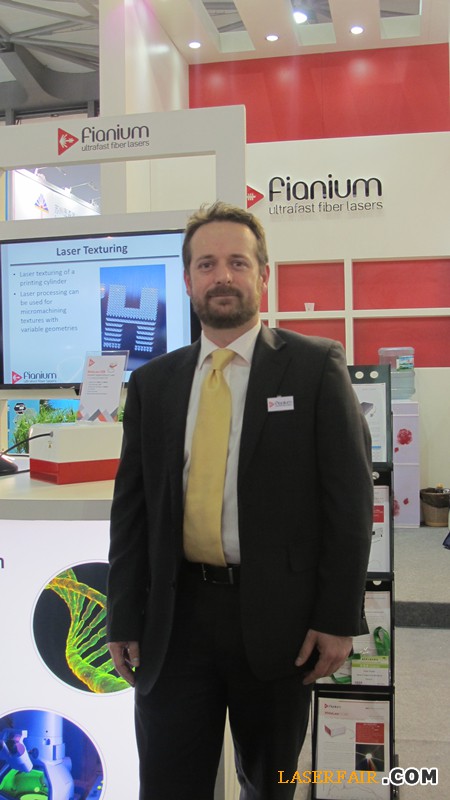

The company has a lot of employees who come from the Opto-electronics Research Centre from Southampton University so we are a technically skilled company, and we have about 15 PhD. researchers, out of around 60 employees. So we have a big focus on R&D and put leading-edge technology into the market as soon as possible. We do our manufacturing and design in Southampton and also we have offices in China and the United States.
2. 《激光制造商情》:请您介绍一下目前贵公司有哪些产品。
Ross: We have three product lines. The main product line is the WhiteLase supercontinuum fiber laser, or “white light” laser. They have been used in a many applications because of the broad wavelength spectrum available. The range applications in cludes biological imaging and we have now sold more than 1,500 continuing supercontinuum to almost all leading universities and research institutions around the world.
The second product line is our FemtoPower femtosecond laser. These high power systems produce femtosecond pulses at multi-watt levels. They are also very low cost systems compared to Ti:sapphire lasers or other technology available. They are almost exclusively used in imaging and spectroscopy, again in both research industrial environments.
The final product line is high energy lasers for microprocessing. In this application area we have an “HE” (for High Energy) range which goes up to 10 micro joules pulse energy. Then we have the new HYLASE product range, which goes to over 125 micro joules. So we have two product ranges covering different energy levels. Both are exclusively for micro processing, which can be glass and sapphire scribing, photovoltaic manufacture or thin film processing.
3. 《激光制造商情》: Fianium的皮秒和飞秒光纤激光器有哪些技术优势?
Ross: Traditionally, companies used nanosecond or CW lasers for materials processing. In these processes the laser can cause unwanted heat effects in the material like melting and surface cracking. So the advantages of picosecond laser is that it can do athermal or “cold” ablation, processing the materials at a molecular level. The picosecond pulse deposits a lot less heat to the sample, so that means you have much smaller features than nanosecond or CW lasers. You get much cleaner features with steeper side-walls, lower cracking and less melting.
The precision is generally from the combination of picosecond pulses and fiber laser technology. That’s a very powerful combination we have. Picosecond lasers introduce less heat effect to the processing, which means the ablation effect is much more localized than an equivalent power nanosecond laser. Also the beam quality from fiber lasers is typically superior to a solid laser. So it has smaller marks, higher detail and more precise processing.
4. LMN:2月份美国Photonics West 期间,贵司获得PRISM科学激光奖,对获得这一奖项,您有什么评价?
Ross: Yes. We are very proud to win the PRISM AWARD 2015. We are a very high-technology focused company and we apply ourselves at the leading edge of technology. The PRISM AWARD 2015 was for the WhiteLase SC400 20W supercontinuum laser source, which is the highest power source available on the market. It represents a three times increase in power compared to the next most powerful source in the market. So it’s really nice to see the recognition for pushing the boundaries and showing what we can do with ultrafast fiber lasers.
5. LMN:超快固态激光器和超快光纤激光器,在性能和应用方面,是否有什么区别?
Ross: We operate in some of the same application areas as solid state lasers. Ultrafast fiber lasers have a number of advantages, one is the beam quality from a single mode fiber laser. So you have excellent beam quality that translates to high quality material processing. Our systems are all based on fiber oscillators so there is no user maintenance or service required. You don’t have a breakdown due to misalignment of a free space cavity, which is quite a big thing for solid state laser.
The fiber laser technology is similar to that found in the telecoms market, so we share a lot of components and we benefit from the low component price in that market. So the fiber lasers are significantly lower cost than the solid state laser equivalents.
In general, if an ultrafast fiber laser and a solid state laser have the same performance, the fiber laser should be the one with lower cost.
6. LMN:大功率的光纤激光器在宏观材料加工方面发展势头很猛,有预测说,随着微观材料加工需求增加,超短脉冲光纤激光器将是下一个热点,您怎么看待?
Ross: I agree. I think we see the change of the same kind as CW and nanosecond lasers. 20 years ago, CW and nanosecond sources were becoming high power in industrial applications. Then we saw fiber laser come along afterwards. The ability to have the same powers with the benefits of fiber lasers means we just have the fiber technology now in some industries. And now we start to see the same thing in ultrafast regime. The current very high performance systems use solid state lasers, but we are starting to see fiber laser system become cheaper, and higher performance so fiber lasers start to take this market share. So at the moment the main top power level are solid state lasers, because there are some technical challenges in very high power ultrafast laser. That’s the challenge Fianium are trying to solve and we will see more fiber lasers in the future as the performance improves.
Several years ago, CW high power fiber laser grew fast in cutting applications, but as the ultrafast fiber laser will have lower cost and higher performance, we will see more application for picosecond lasers. In the early days, people liked nanosecond lasers because of its low price, but now picosecond lasers are becoming lower cost and more and more popular.
7. LMN:请谈谈Fianium在中国市场的销售发展情况,以及2015年有什么战略。
Ross: One of the key decisions of Fianium made was to set up a company in Hong Kong, covering the market in China. It worked very well at the time and helped us to know more about China market.
Since that time, the Chinese office grows very well, and Fianium is gradually known to Mainland China. We have seen our sales grow very well, around 20% growth rate better than the other areas.
In 2015, we are adding people, and we will try to show more presence in the China market.
NEWS
 9th Secret Light Awards Launch: Million-Yuan Fund + National Award Recommendation
9th Secret Light Awards Launch: Million-Yuan Fund + National Award Recommendation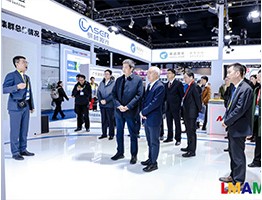 Top Enterprises Gather: 1st Laser & Additive Manufacturing Innovation Conference Wraps Up
Top Enterprises Gather: 1st Laser & Additive Manufacturing Innovation Conference Wraps Up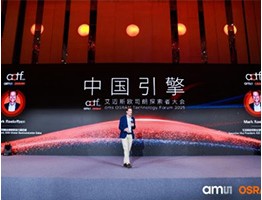 2025 ams OSRAM Explorer Conference: "China Engine" Drives Future Innovation
2025 ams OSRAM Explorer Conference: "China Engine" Drives Future Innovation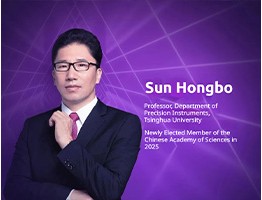 Tsinghua's Sun Hongbo, SLA Review Expert, Becomes CAS Academician
Tsinghua's Sun Hongbo, SLA Review Expert, Becomes CAS Academician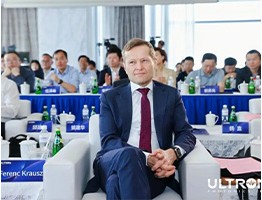 4th Collaboration! What Brought the Global Laser Academic Guru to Chinese Univs & Leading Firms?
4th Collaboration! What Brought the Global Laser Academic Guru to Chinese Univs & Leading Firms?
INTERVIEW
 Scanner Optics: Galvanometer Tech Leader
Scanner Optics: Galvanometer Tech Leader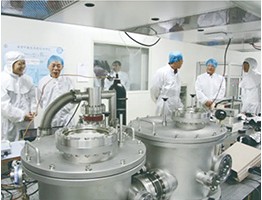 The "Light Chasers" in the Deep Ultraviolet World
The "Light Chasers" in the Deep Ultraviolet World Shi Lei (Hipa Tech): Focus on Domestic Substitution, Future Layout in High-End Laser Micromachining
Shi Lei (Hipa Tech): Focus on Domestic Substitution, Future Layout in High-End Laser Micromachining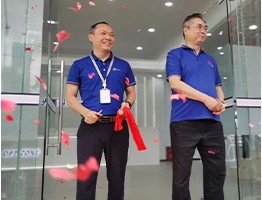 Optizone Technology: 17 Years Devoted to Optics – High-Power Optics Mass-Production Pioneer
Optizone Technology: 17 Years Devoted to Optics – High-Power Optics Mass-Production Pioneer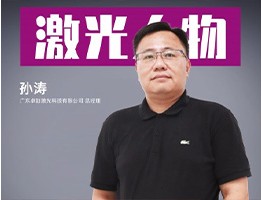 Zhuojie Laser: Breaking barriers via tech breakthroughs, aiming to lead high-end light sources
more>>
Zhuojie Laser: Breaking barriers via tech breakthroughs, aiming to lead high-end light sources
more>>
